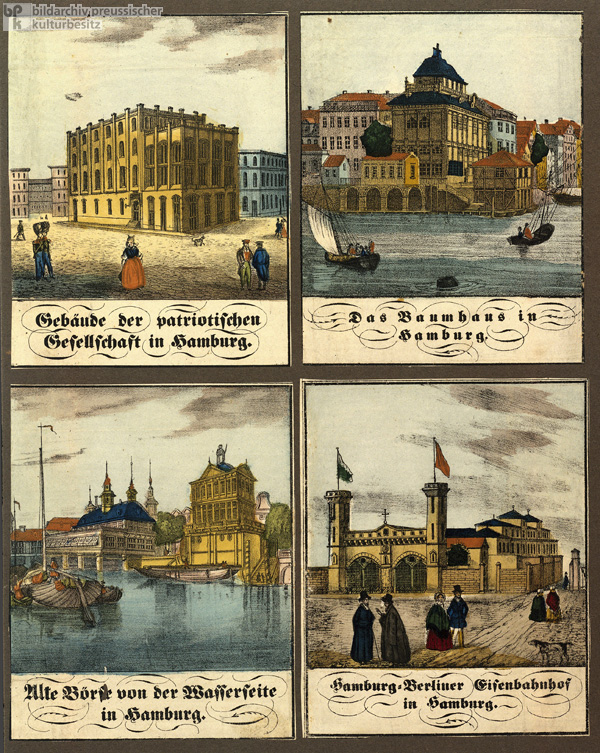













INTRODUCTION | DOCUMENTS | IMAGES | MAPS | EDITOR
|
In the nineteenth century, illustrated color broadsheets became increasingly popular as a means for local populations to celebrate and publicize the unique features, achievements, and characteristics of their cities, towns, and regions. Dating from the late 1840s, these color images of various architectural landmarks in Hamburg underscore the city’s contributions – both past and present – to culture and commerce. Founded in 1765 in the spirit of the Enlightenment, the Hamburg Patriotic Society (upper left), promoted the arts as well as commercial enterprises. The society’s building was erected in 1847 on the former site of the Hamburg city hall, which had been destroyed, along with approximately one-third of the city, in the Great Fire of 1842. During Hamburg’s lengthy history as a fortress, it was possible to close off its inland port with a boom (“Baum”). The elevated building constructed there in 1662 (upper right) was thus named the “Baumhaus.” Dating from 1558, the Old Bourse (lower left) was the first of its kind in northern Europe. It was established at a time when Hamburg was experiencing an economic boom on account of its membership in the Hanseatic League and the far-reaching effects of the Reformation. Finally, the Hamburg-Berlin train station (operations began in 1846; construction was completed in 1857), represented the progress of transport technology at a very early stage of railway construction (the first German railway line began operations in 1835 between Nuremberg and Fürth). Illustrated broadsheet (Bilderbogen) by unknown artist, late 1840s.
© Bildarchiv Preußischer Kulturbestiz / Dietmar Katz |
 print version
print version return to image list
return to image list previous image
previous image
